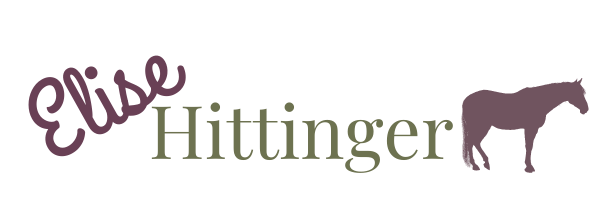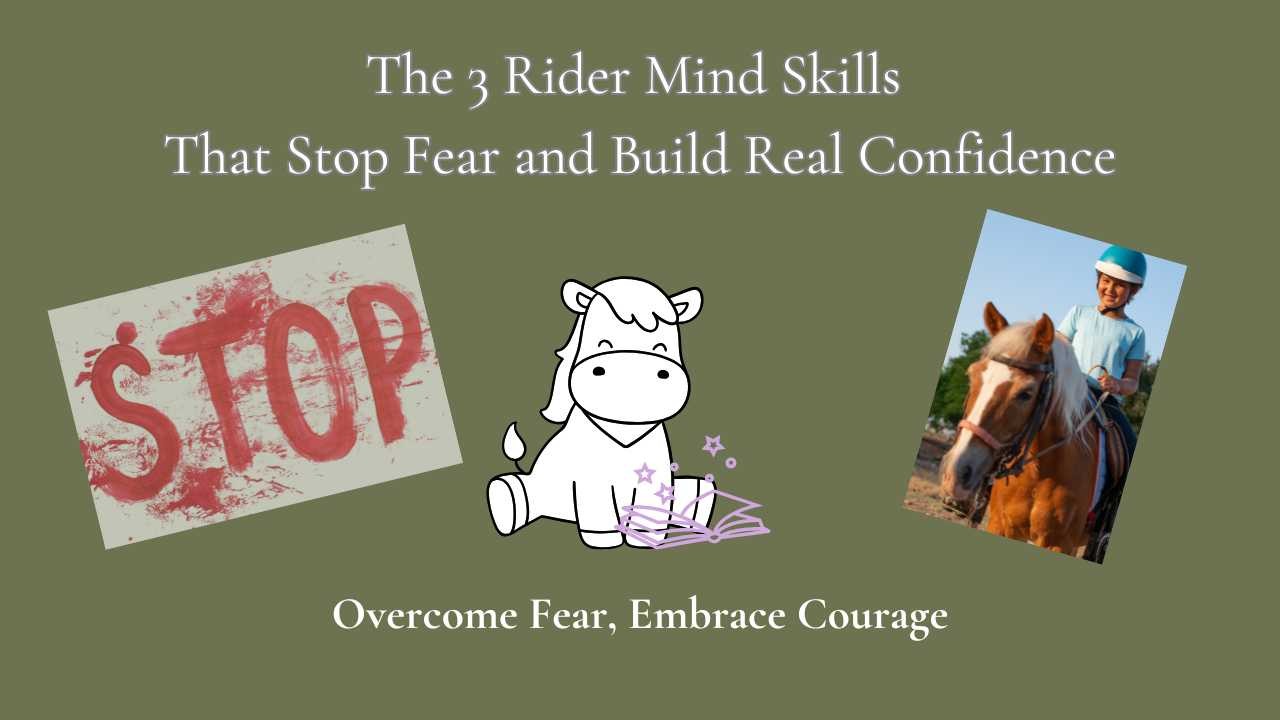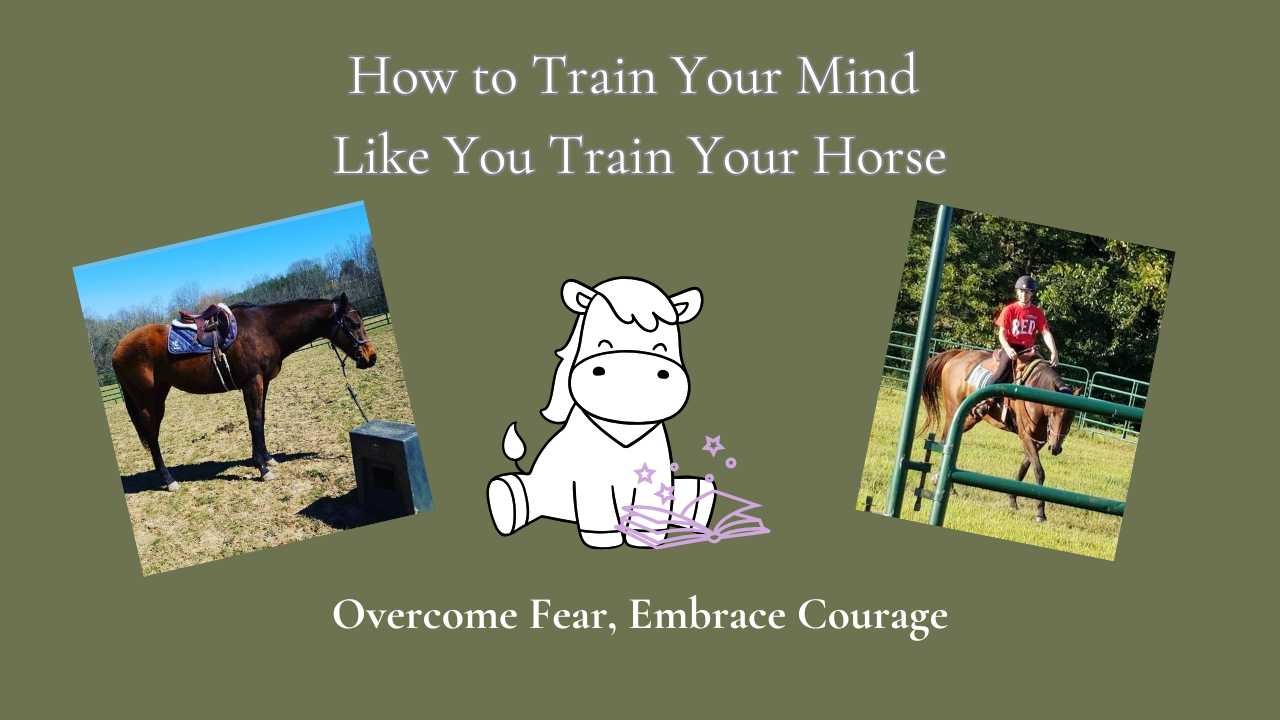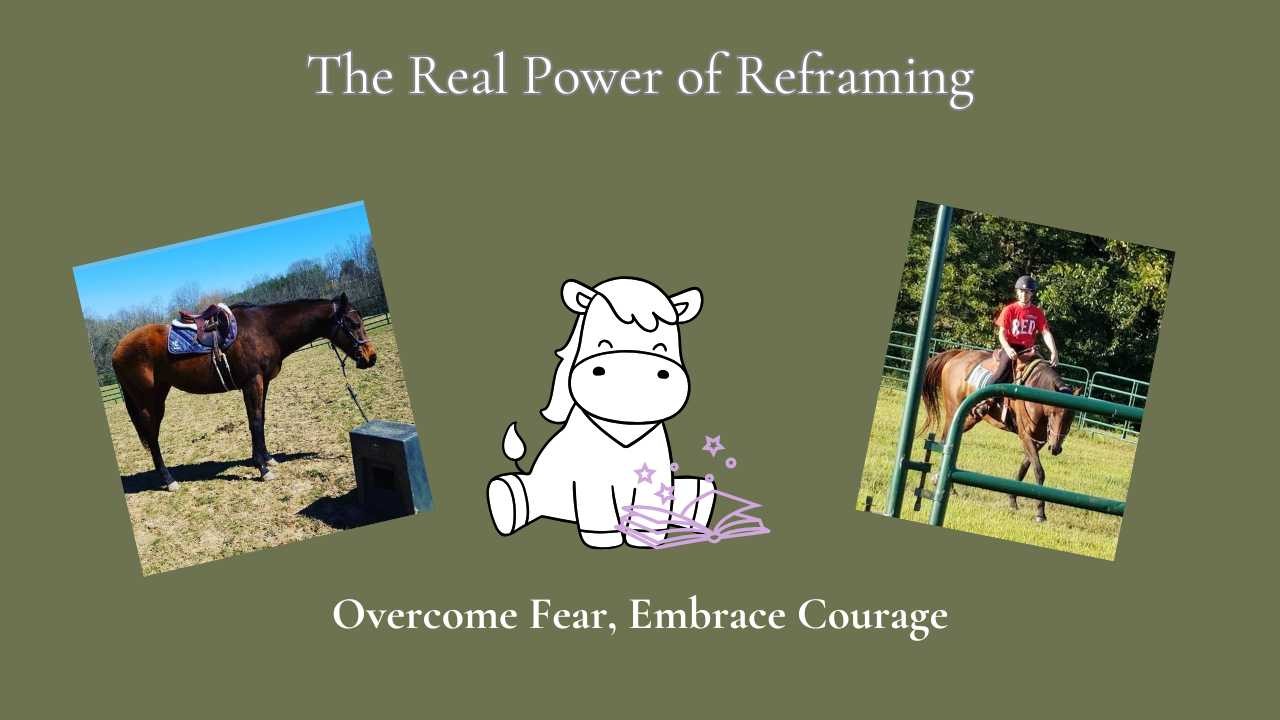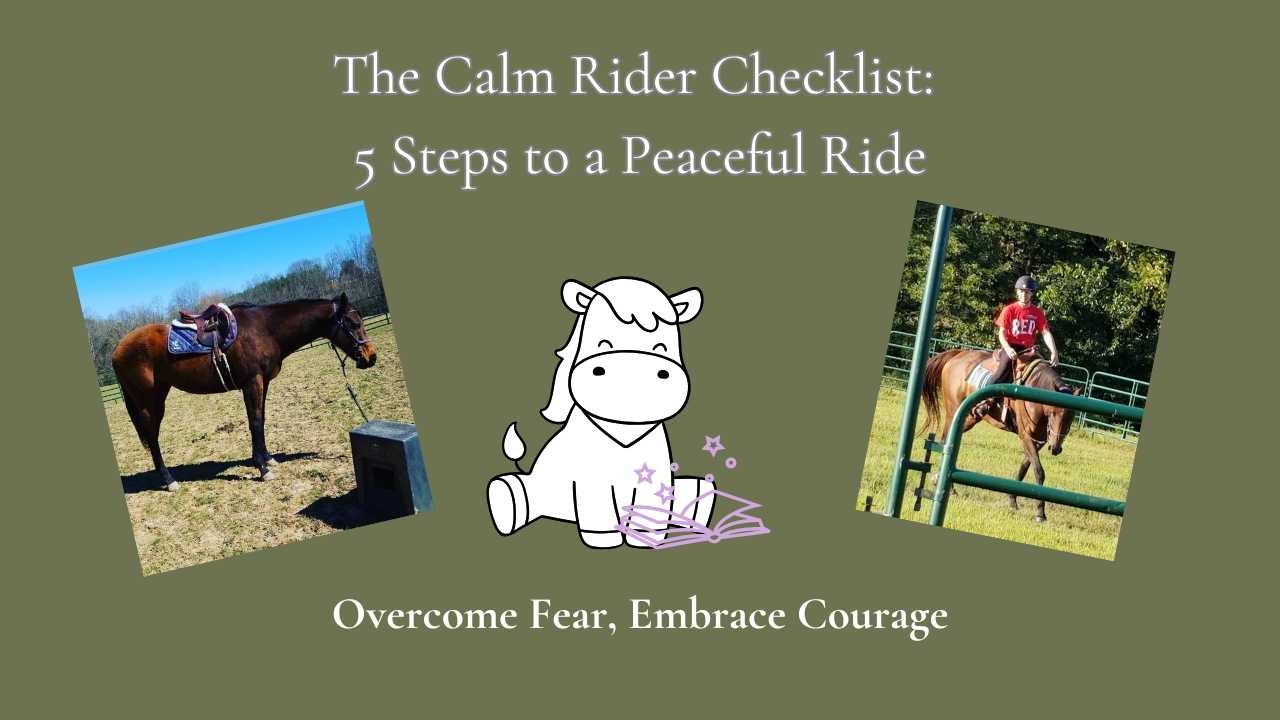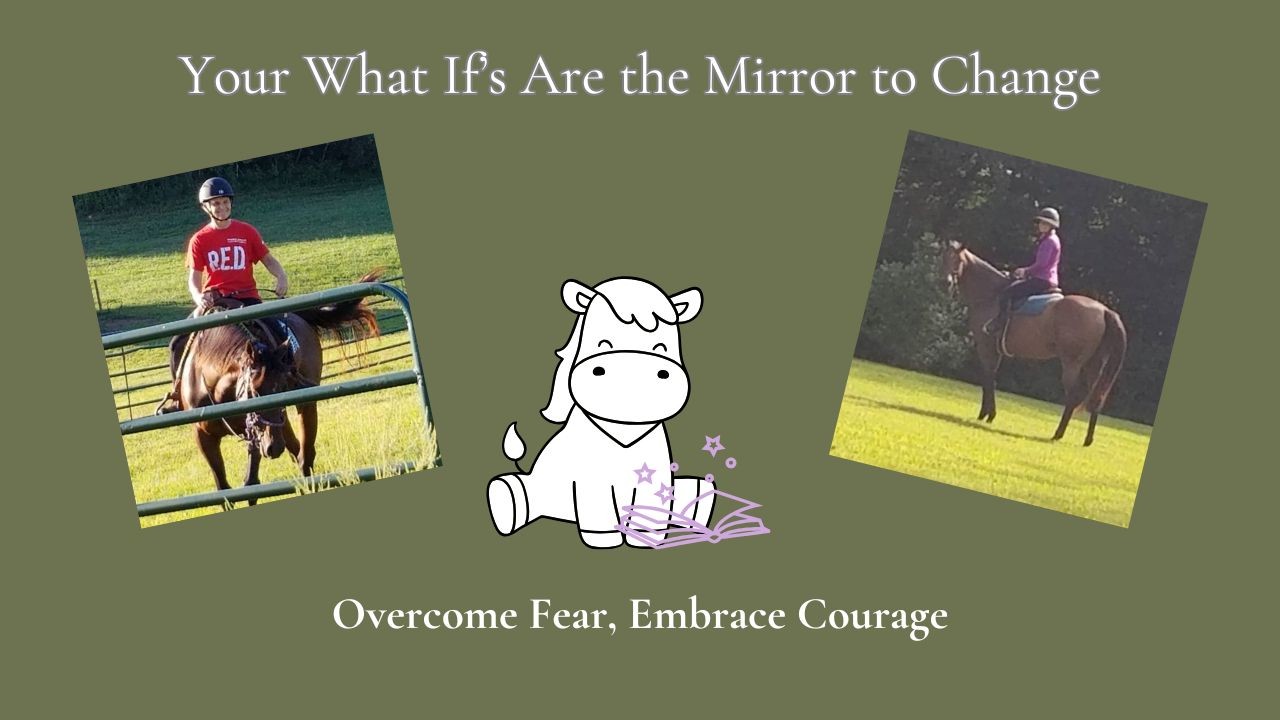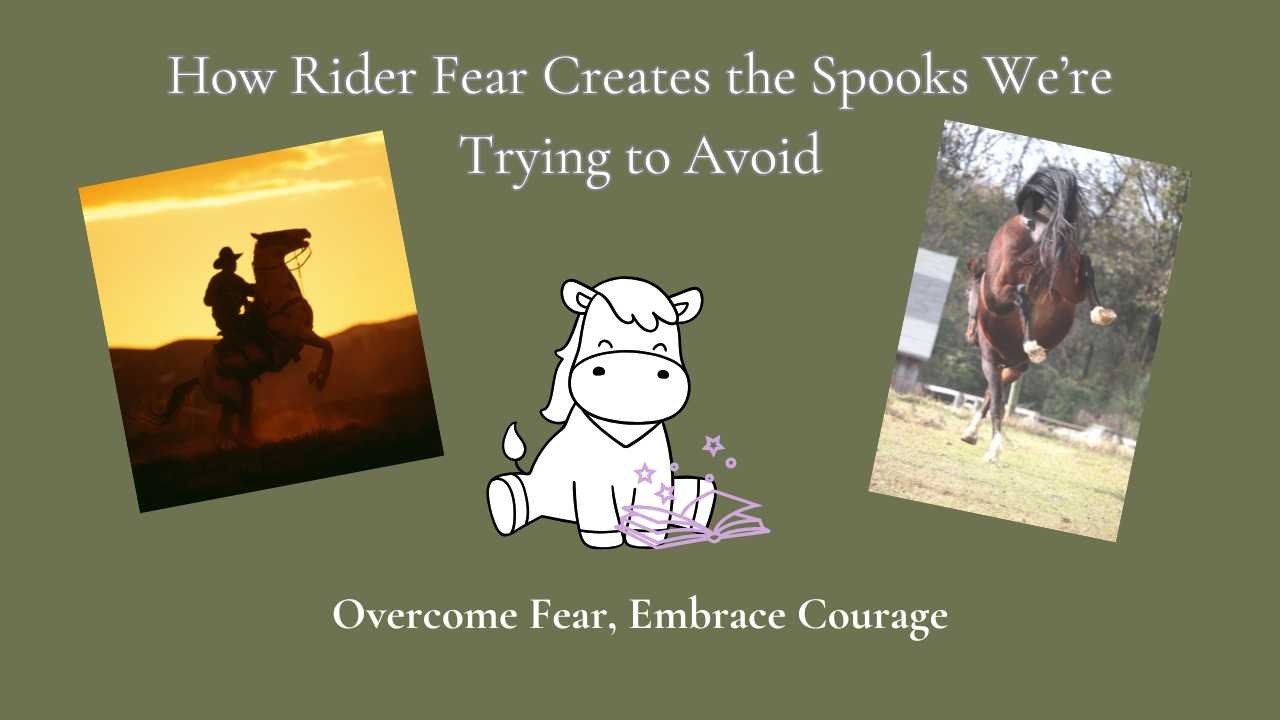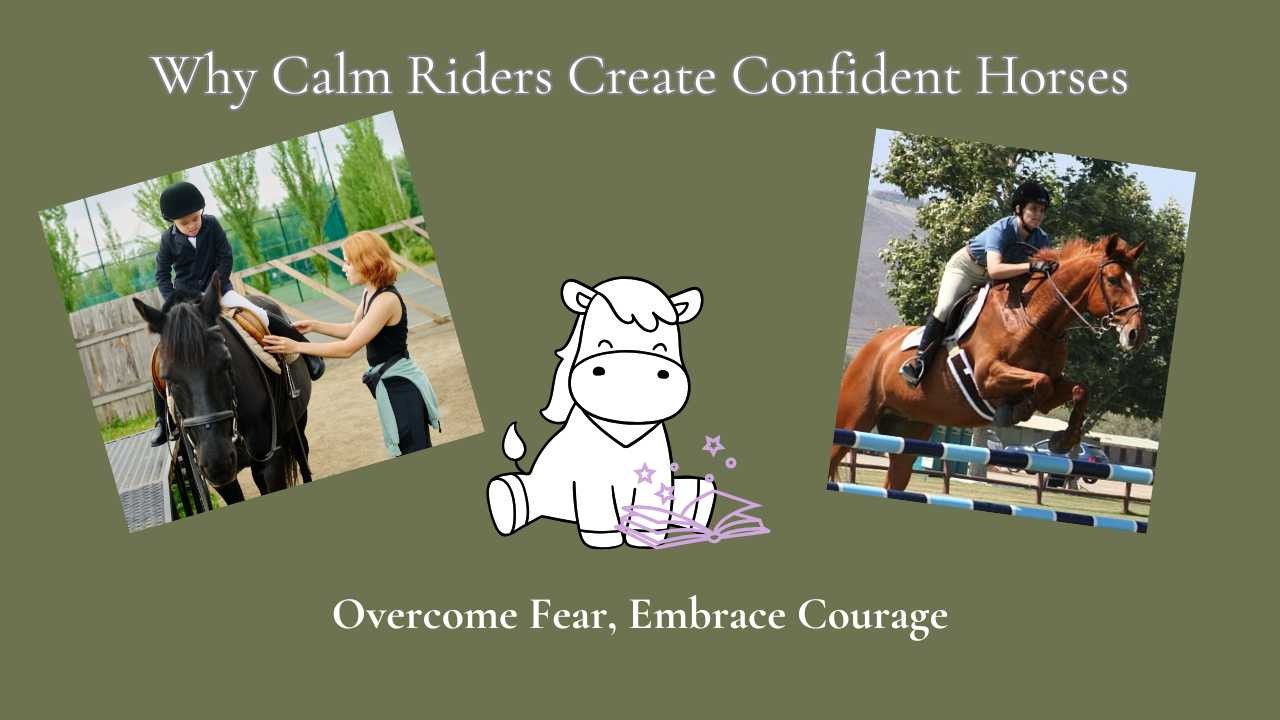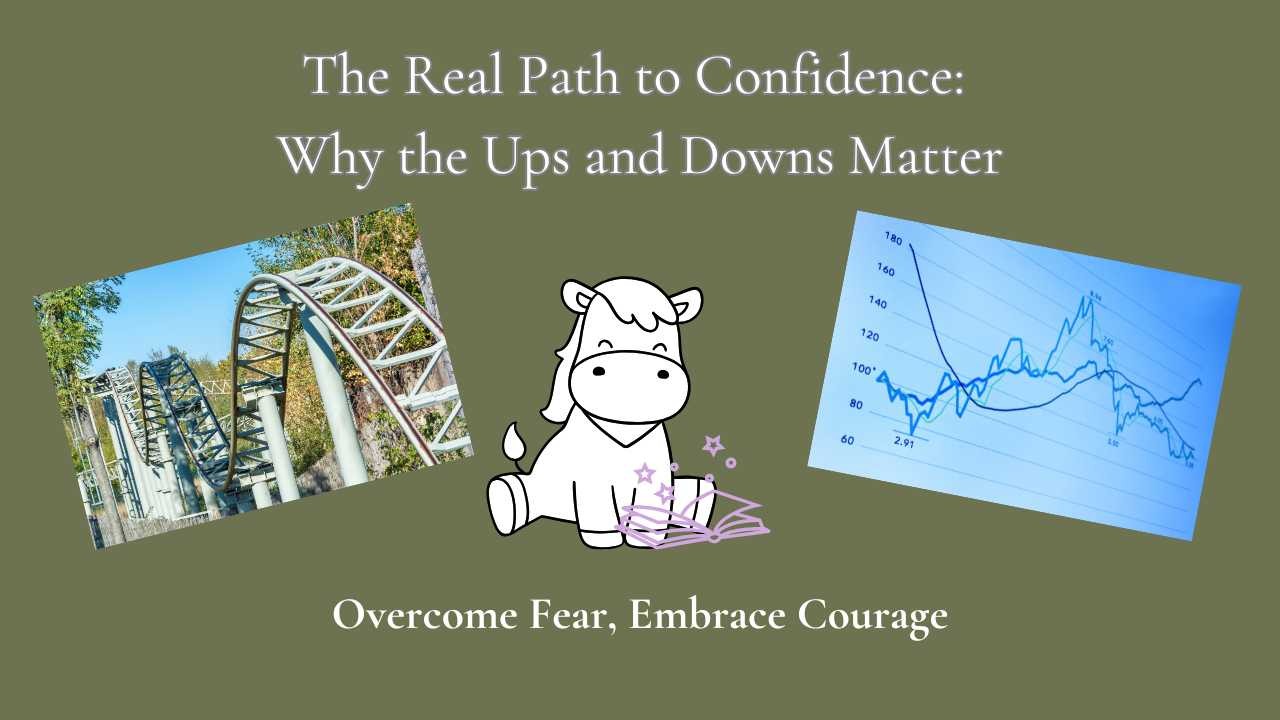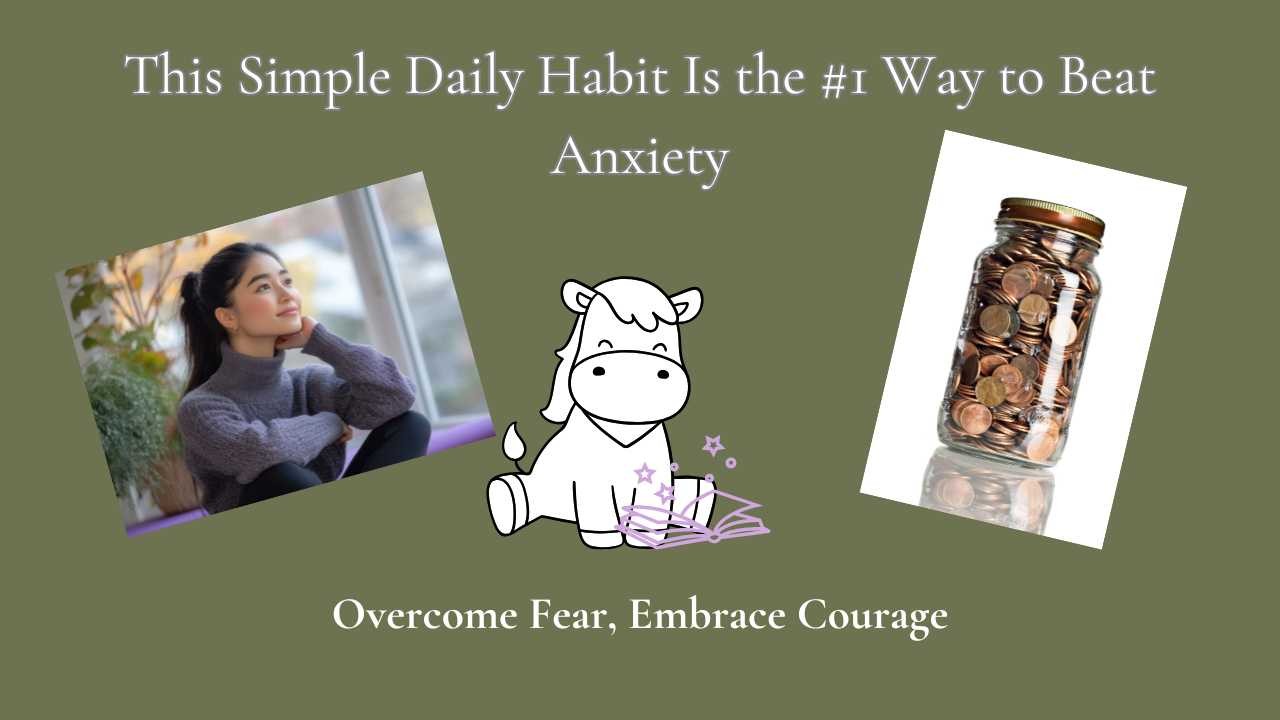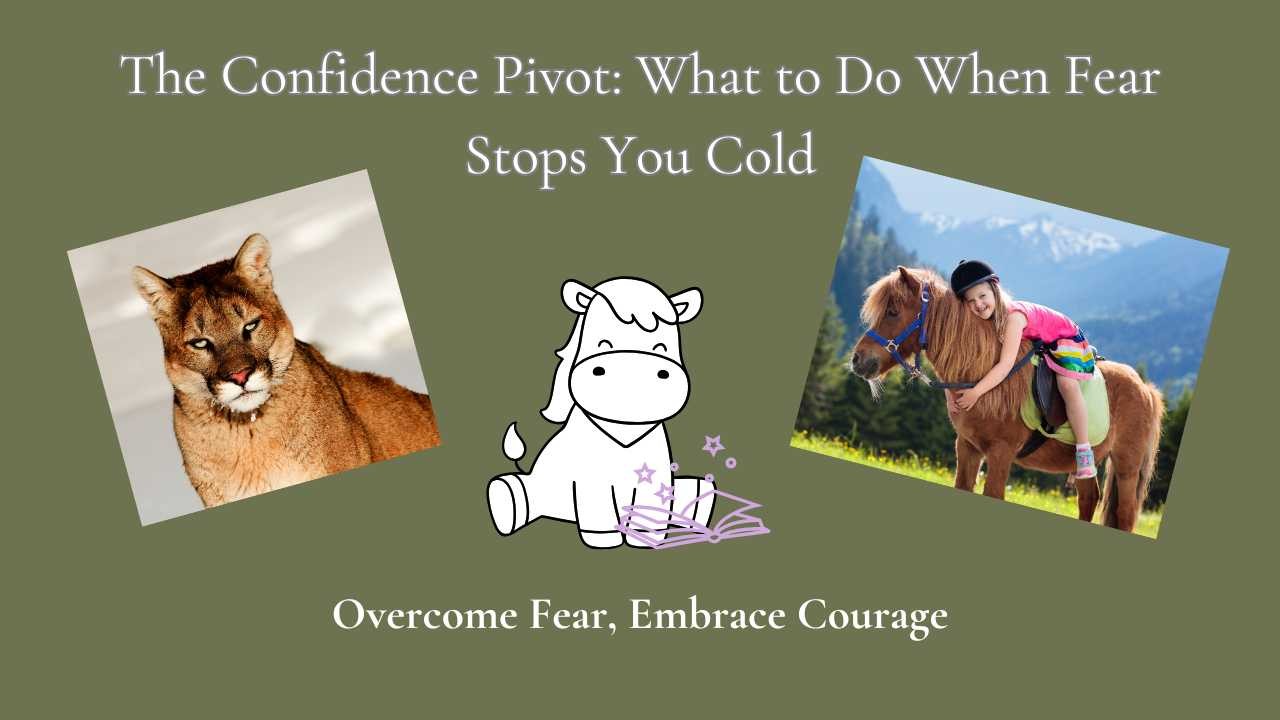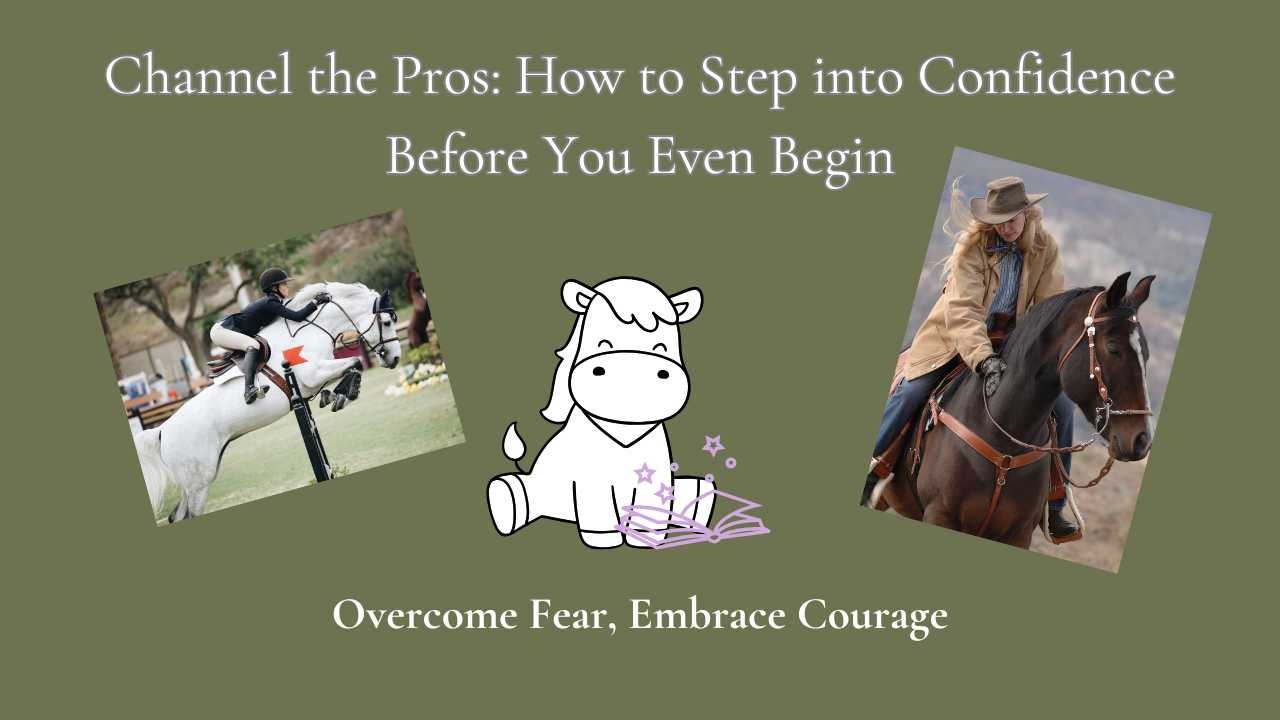
My horse was having a challenging day. You know the kind—ears tight, energy buzzing, and my own anxiety rising fast. I could feel my brain starting to shut down, that familiar fog creeping in. And then, out of nowhere, a thought popped into my head:
“What would Carson James do?”
Instant shift.
I wasn’t just thinking about Carson—I was channeling him. His calm. His clarity. His ability to assess, adjust, and act without drama. And just like that, my anxiety faded. My brain came back online. All the things I’d learned, all the tools I’d practiced—they were suddenly accessible again. I just needed to execute.
And I did. I had a great ride.
This is the confidence hack most riders (and coaches, and creatives) miss. We wait for confidence to show up after we’ve succeeded. But the pros? They summon it before they begin.
They ask, “What would my best self do here?” They channel that energy. They lead from it.
The great news? You can do this ahead of time—before you even walk into the barn. Pick your favorite trainer and walk in their shoes. The imagination we had as kids comes in handy here.
Pretend to be your favorite trainer.
Imagine stepping into their mindset. The one who handles chaos with grace. The one who doesn’t rush, doesn’t react—just responds and knows what to do.
Confidence isn’t about being fearless. It’s about remembering who you are and what you know—then choosing to lead from that place.
You don’t need more information. You need access to what you already know.
So go ahead. Channel the pro. Your brain—and your horse—will thank you.
✨ Want more tools to overcome anxiety and ride with clarity? Grab my workshop in ebook form: The Confidence Blueprint—9 Powerful Principles to Rebuild Your Confidence. For a limited time, it’s just $17. No travel, no pressure—just powerful insight, right where you are. Get your copy here!
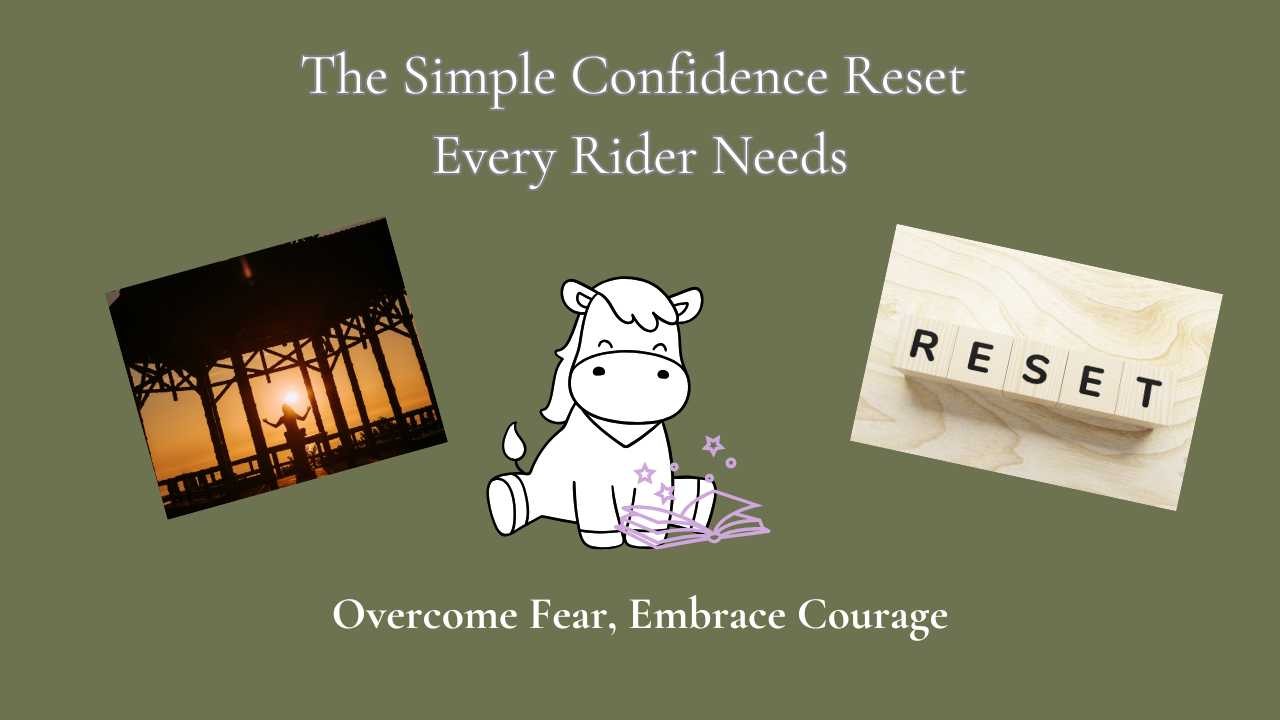
When anxiety or nerves creep in while you ride, your body knows it before your mind does. Shoulders tighten, breath shortens, and suddenly your horse feels that tension too. The harder you try to “push through,” the louder the fear seems to get.
That’s why I love the 3x3x3 Confidence Reset—a simple tool you can use anytime, anywhere, to calm your nervous system and bring your focus back. It’s quick, it’s practical, and it works even in the middle of a ride.
Here’s how it works:
Step 1: 3 Breaths
Pause and take three slow, deep breaths. Inhale through your nose, exhale through your mouth. Feel your shoulders drop a little lower each time. This step tells your body: “We’re safe.”
Pause and take three slow, deep breaths. Inhale through your nose, exhale through your mouth. Feel your shoulders drop a little lower each time. This step tells your body: “We’re safe.”
Step 2: 3 Things You See
Look around and name three things you can see. The fence post. The saddle horn. Your horse’s ears. Naming them out loud helps your brain shift from “what-if” thoughts to what’s real, right here, right now.
Look around and name three things you can see. The fence post. The saddle horn. Your horse’s ears. Naming them out loud helps your brain shift from “what-if” thoughts to what’s real, right here, right now.
Step 3: 3 Things You Feel
Notice three things you can physically feel. The leather reins in your hands. Your seat in the saddle. Your feet pressing into the stirrups. Grounding through sensation reconnects you to your body and steadies your presence.
Notice three things you can physically feel. The leather reins in your hands. Your seat in the saddle. Your feet pressing into the stirrups. Grounding through sensation reconnects you to your body and steadies your presence.
In less than a minute, this reset interrupts the spiral of anxious thoughts and gives your horse a calmer, more confident rider. And here’s the best part: the more you practice it, the faster your nervous system learns to respond. Eventually, confidence becomes your default, not fear.
I know firsthand how quickly confidence can be hijacked and how long it can take to rebuild. My own journey took me nearly twenty years—but it doesn’t have to take that long for you. With the right tools, like this reset, you can fast-track your calm and reclaim the joy of riding.
If you’re ready to take the next step and discover the tools that work best for you and your horse, let’s talk. Book your free Calm-Ride Strategy Call today, and let’s start filling your ride with confidence instead of fear.
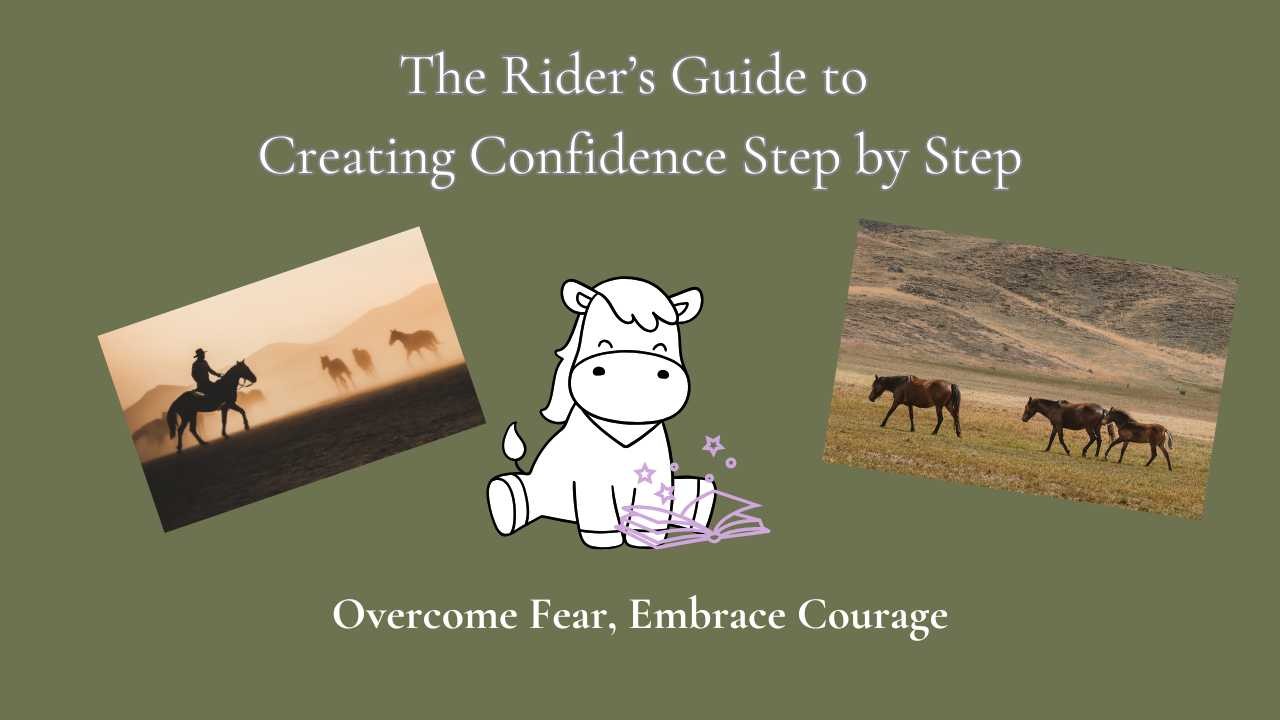
Confidence in the saddle isn’t something you’re born with—it’s something you build, one ride at a time. But here’s the truth most riders don’t hear enough: you don’t have to wait decades to get there. I know, because it took me 20 years to rebuild my own confidence after a bad accident. Twenty years of trial and error, piecing things together the hard way.
The good news? You don’t have to take the long road. With the right tools, support, and a step-by-step approach, you can move through fear faster, steadier, and with a whole lot less frustration.
Think of it like learning to ride all over again. You don’t climb on a horse and instantly lope off into the sunset—you start small. First, you find your balance at the walk. Then you add in new skills, test your edges, and practice what helps you feel steady. Over time, that steady walk turns into a confident trot, then into the freedom of a canter.
Building confidence works the same way:
- Step one: Calm your mind. Learn simple resets so fear doesn’t spiral out of control.
- Step two: Test and practice. Add a little challenge while staying grounded in calm.
- Step three: Build momentum. String your wins together until confidence feels natural.
It’s not about giant leaps or “faking it till you make it.” It’s about steady, consistent steps forward—steps that stack until you realize you’re riding with ease again.
Patience for steps backwards, knowing there are more steps forward that are coming. It is an ebb and flow.
If confidence has felt out of reach, you don’t have to wait years like I did. You can start creating it today, step by step, with the right guidance.
Ready to find out what your first step should be? Let’s talk.
👉 Book your Calm-Ride Strategy Call and discover the tools that can shorten your journey back to confidence in the saddle.
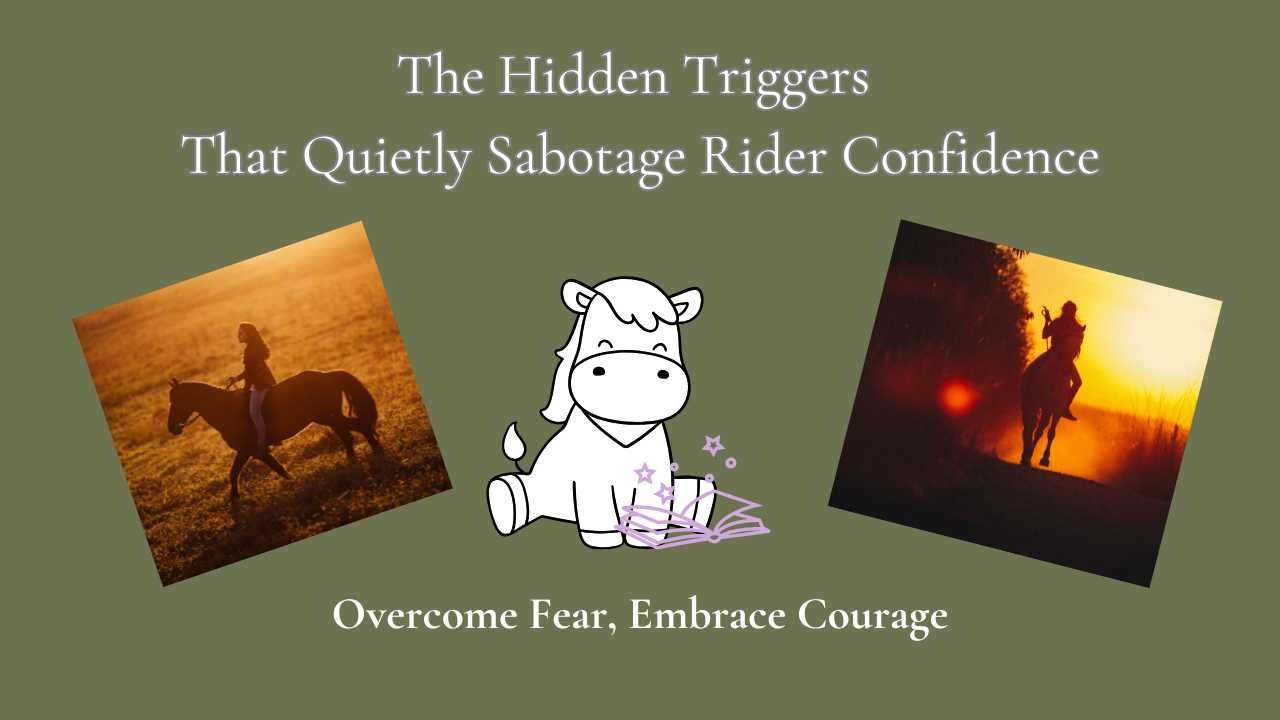
When most riders think of fear, they picture the big events—a fall, a spook, an accident that shakes everything. But the truth? Confidence is often undermined by smaller, hidden triggers that slip under the radar until suddenly, they feel overwhelming.
It works a lot like with our horses. A horse doesn’t usually blow up out of nowhere. First, they flick an ear. Then, their head goes up. Maybe their stride gets tight. Those little signs are the whispers before the shout. And if we don’t notice? That’s when we end up with the spook, bolt, or buck.
The same is true for us. Our hidden triggers often look like:
- A tight chest every time you mount up.
- Avoiding a certain gait or arena corner without realizing why.
- Telling yourself you’re “just too busy” to ride.
- Lots and lots of "What If's".
- SO MANY EXCUSES.
Each of these is a whisper from your nervous system. And just like with your horse, the earlier you catch the signs, the easier it is to reset.
The key is to pause and ask: What’s really going on here? Instead of pushing through, notice the trigger, name it, and reframe it. By catching it early, you stop it from snowballing into a full-blown confidence crash.
Your horse depends on you to lead with calm presence. That starts by leading yourself—listening to the whispers before they become shouts.
👉 Want to learn how to spot those whispers and shift them into strength? Download your very own Confidence Blueprint for 9 strategies to build calm, steady courage. It is a full workshop in an ebook for only $17 and you don't even have to travel. You can do it in you PJ's with a cup of tea. Get your Confidence Blueprint HERE!
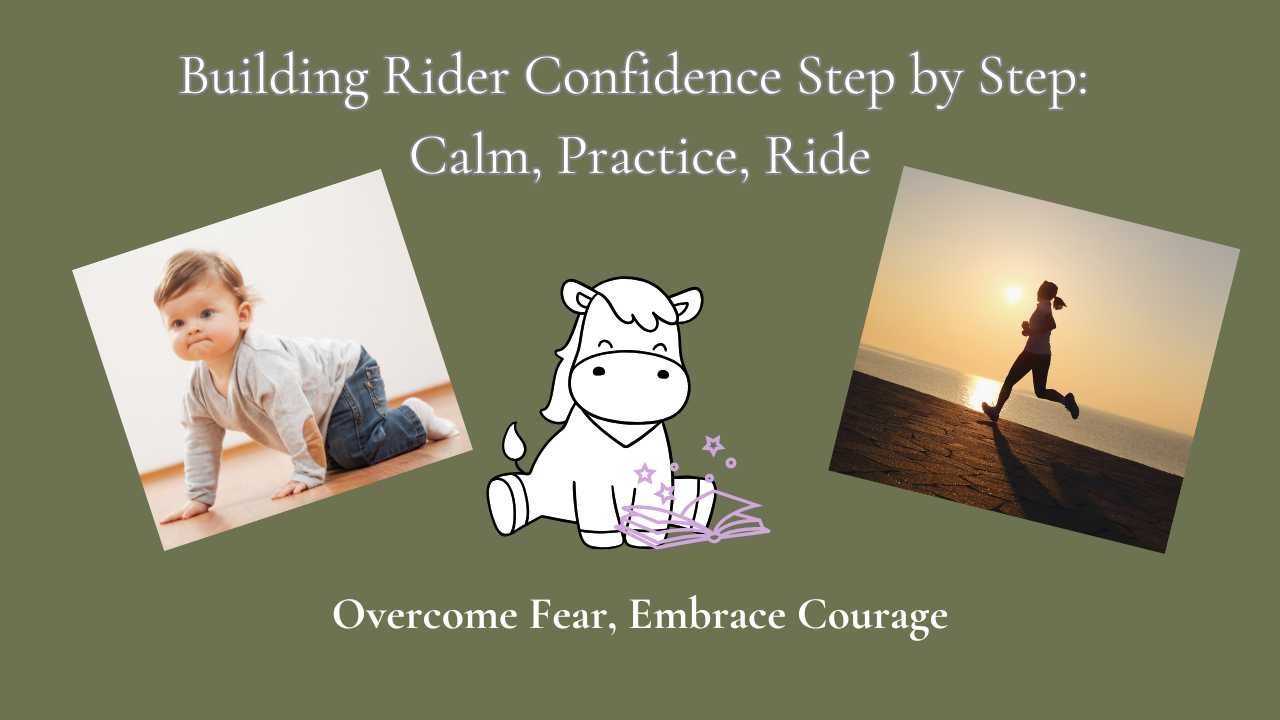
When we think about confidence, it’s tempting to believe some riders are just “born with it.” But that’s as unrealistic as expecting a baby to hop up and run before they’ve learned to crawl.
Confidence in the saddle is no different—it’s a skill, a muscle, something we build step by step.
Think about how we learn to move as kids:
- Crawl first. Slow, shaky, uncertain. This is where you start calming your mind, practicing grounding techniques, and finding steady footing before you even get on your horse.
- Then walk. You begin to add in little stressors—maybe a short ride, a new exercise, or a challenge that’s just outside your comfort zone—while practicing those calm-mind skills. You’re not racing, just getting stronger, building the confidence muscle.
- Finally, run. With practice, your mind and body work together. This is where confidence starts to feel natural again. You can lean into the joy of riding because you’ve done the work to build a foundation.
The truth is, fear doesn’t disappear overnight. But when you approach it in small, intentional steps, you set yourself up for real, lasting confidence. Just like learning to walk, you’ll stumble, wobble, and maybe fall—but every try strengthens your balance.
So instead of asking yourself, “Why don’t I just feel confident already?” try asking, “What step am I on today?” Because each step matters—and each step brings you closer to the ride you’ve been dreaming of.
👉 Want a tool to help? Grab my Confidence Blueprint—9 proven strategies to keep you moving from crawl to canter with courage. It is a full workshop in an ebook at a great price of $17 and you don't even have to travel! Get the Confidence Blueprint HERE!
